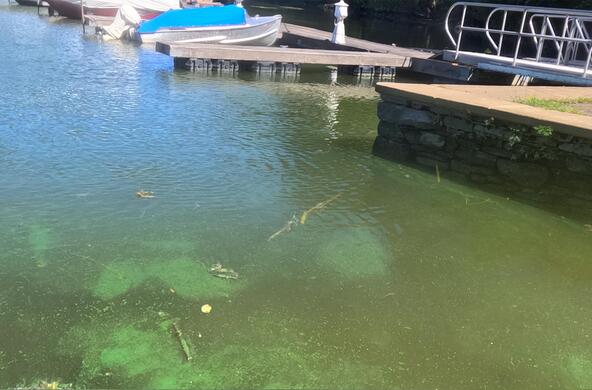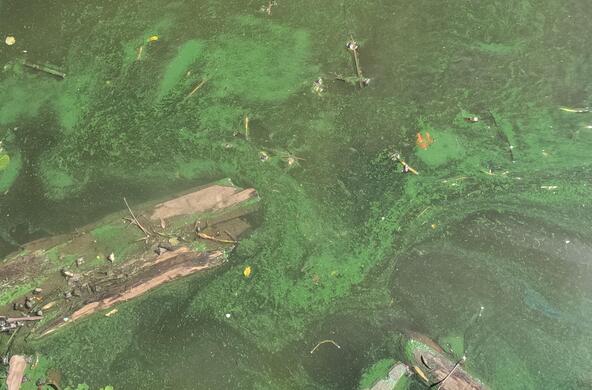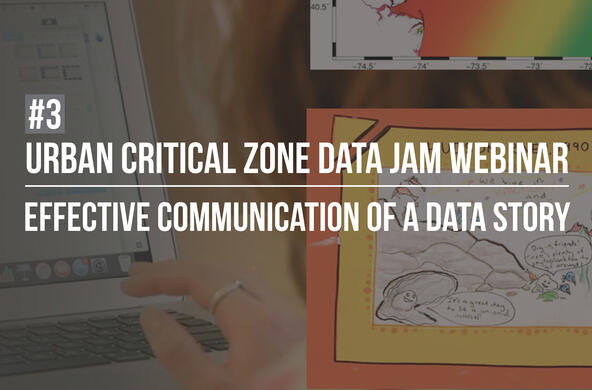Water splashes as three teenagers charge into Wappinger Creek, while a handful of others linger on the bank. It’s a muggy July day, but they aren’t here to cool off.
“TDS is what?” asks Leila Clarke, who is taking notes on shore.
“143,” says Violet Aufdenberg from the water.
In between swatting mosquitoes and scrambling over fallen trees, these high schoolers are measuring the creek’s temperature, flow rate, and total dissolved solids (“TDS”) as part of their research for the Mid-Hudson Young Environmental Scientists program.
MH-YES’s aim is to foster an interest in environmental science, especially for young people in groups traditionally underrepresented in the sciences. Every year, the program brings 12 local high school students to Cary Institute of Ecosystem Studies for three weeks. Working together with undergraduates, teachers, and professional scientists, the students divide into groups to design and conduct scientific research.

“We provide students with a real scientific research experience from start to finish,” explained Jane Lucas, a Cary Institute microbial ecologist and one of the MH-YES scientific mentors. “They come up with a question, do background research, design and implement a project, and then present their findings. This is an exciting opportunity that I don’t think many students experience until much later in their scholastic endeavors.”
This year’s students investigated three questions. One group studied how septic runoff influences plant growth and soil microbes along Casper Creek. Another evaluated how beaver dams and human-made dams affect species richness and water quality. And the third group examined how water velocity influences the health of a stream.
Back at Wappinger Creek, Nikhil Sandesh tromps into the water with a net to scoop up critters living in the creek’s sediments, then empties the net into a bin. Violet Favell and Santana Wilson deftly spot the small, wormy creatures hiding amongst the sand and pebbles, capturing them with plastic pipettes and sorting them into an ice cube tray for counting.


Judging from the banter and a lobbying attempt to stop for ice cream, the students formed a comfortable and tight-knit group over the course of the three-week program. This inclusive and supportive community—where students and instructors can bond despite coming from different places, backgrounds, and levels of experience—is one of the most wonderful things about MH-YES, said Cary Institute program leader Rebecca Van Tassell.
A tiered mentoring approach—with PhD scientists mentoring local college students, who then in turn mentor the high school students—is another unique and special aspect of the program, said Zion Klos, an environmental scientist at Marist College who also serves as a scientific mentor.
“I really enjoy the opportunity this program provides my college students to become environmental educators for the first time, often inspiring them in ways that influence their decisions for their careers ahead,” said Klos.

After the field and laboratory research, the students devoted most of their final week to analyzing their findings. This is one of Lucas’s favorite parts of the program. “It is always a bit of a mystery as to whether their projects will have significant results,” she said, “and this mystery element can be really fun for me and the students.”
The last few days of the program were devoted to communicating their findings. On July 28, the students presented their results to an audience of more than 100 people—including family, friends, teachers, and Cary scientists—and shared their findings in a poster session. Van Tassell said that watching the students’ nervousness transform into confidence as they tackled questions about their project was one of her favorite parts of the program. “They were literally giddy in the debrief afterwards,” she said.

For Nick Webster, who will be heading to Marist College in the fall, the program has been impactful. Part of the research team mentored by hydrologist Deon Knights of Vassar College, Webster had always enjoyed the sciences and being outdoors, but this was his first chance to try field work, and he loved it—especially wearing waders and netting macroinvertebrates. He’s considering a career in environmental science, and says, “I would recommend the program to anyone in high school.”






